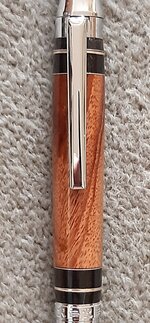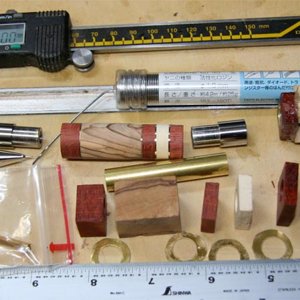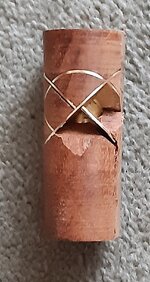7I prefer using epoxy for segmenting...
Just the same way I rough up my brass tubes before use in pen blanks, I also rough up any plastic or metal segments I'm inserting between wood segments with 120 grit sandpaper, as well as the join between very hard woods like ebony. I don't yet do much segmenting with resin blanks, but would probably do that as well.
I have been using JB Weld 5 minute epoxy for the segmented pens above, and I didn't have any issue drilling or turning, as long as I managed my heat during the drill phase. I also use this epoxy if I have a 1 or 2 pen tubes to insert into blanks. My only issue is the limited amount of time to setup the segments, 5 minutes is really more like 3 after you mix the parts.... I just don't like feeling rushed to get the parts assembled and clamped.
I've recently switched to System3 Blade Pro Epoxy, it's a bit more expensive than the others, even the T88, but it has a much longer open time, over 40 minutes in my experience, as long you keep it in a thin layer after mixing and not in a container, like a cup. I've only done 1 segmented blank with it, but I like that I had plenty of time to adjust my blank and clamps. When I have a large batch of tubes to insert into blanks, this is my go-to epoxy. I use a small 1.5 inch plastic lid, or a paper plate and a wooden popsicle stick to apply the epoxy.




